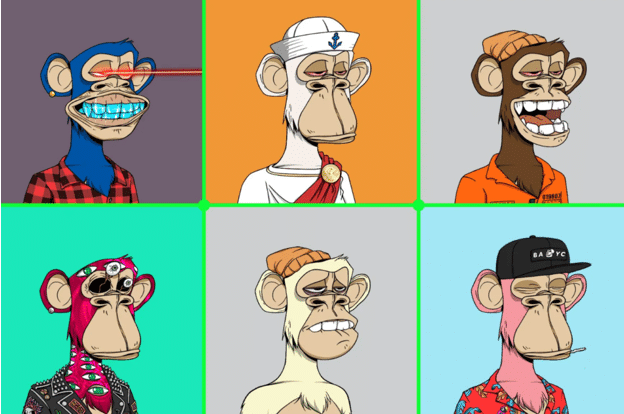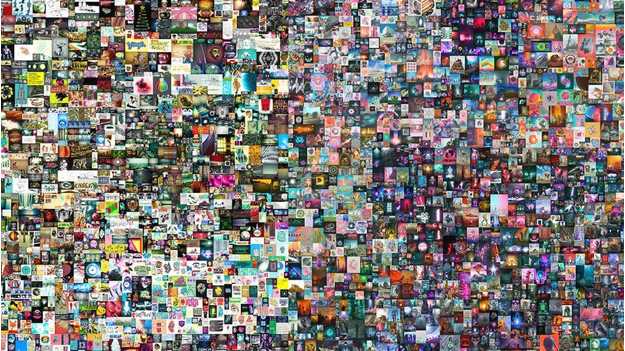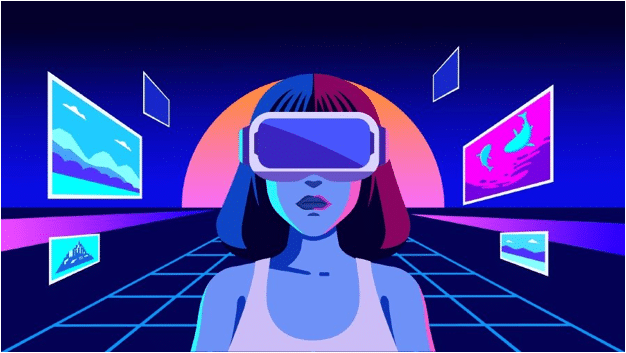
Non-Fungible Tokens (NFTs) are key components of the web3 ecosystem. They are seen as the most accessible and understandable form of cryptocurrency and blockchain technology. Although NFTs have been around since 2015, they only became popular in 2021. However, the many definitions of NFTs available on the internet don’t do much to clear up the confusion about what they are and why people buy them. That’s why we have decided to explore some real-life NFT examples to help you know why people are finding these digital assets important.
What are NFTs?
The best way to understand NFTs is by knowing the difference between fungible and non-fungible items.
Fungible vs Non-Fungible
Fungible means interchangeable. You can replace a fungible item with something of equal worth. Paper money is a good example of a fungible item. You can change a $10 bill into two $5 bills without losing value.
However, non-fungible items have unique features that prevent them from being traded interchangeably. Paintings, like the Mona Lisa, are non-fungible since they exist in their singularity. There only exists one Mona Lisa, hence, it cannot be traded or replaced with anything of an equal value.
Instead, the price of non-fungible items is determined by their demand. For the Mona Lisa example, its value is derived from its uniqueness, combined with its historic and artistic value.
Non-Fungible Tokens
NFTs are the digital revolution of goods that cannot be interchanged. Conventional digital media such as images can be copied and reused infinitely, but NFTs use blockchain technology to ensure the authenticity of each item by embedding virtual content with unique, identifiable signatures.
The blockchain stores the content of the NFT and the signature and links it to the digital wallet of the owner. Although others can still see the NFT, they are not the owners unless they purchase the NFT and transfer it to their digital wallet. Thus, NFTs promote ownership in the digital world. Before NFTs, we could only possess digital currencies. It is now possible to own digital items in the form of NFTs.
The NFT technology enables creators to limit the supply of their digital content. Once an artist publishes an NFT, there will only be as many copies as the artist has released. That is also how NFT rarity is created. Rare NFTs have more value than common ones.
Best NFT Examples
The following are the best examples of NFTs that can help you understand the NFT technology better and how it is changing the way we think about digital assets:
#1: Collectibles and NFT Art
Collectibles are the most popular examples of NFT. An NFT collectible belongs to a group of unique characters generated randomly. No two collectibles are similar, and each collectible can only be owned by one person at a time. The authenticity of ownership is proved using blockchain technology.
The popularity of NFTs has grown exponentially since 2021, and the sale of art pieces and artwork collections as NFTs is very common. One of the popular sales of NFT artwork happened in May 2021 when artist Beeple sold his piece of art as an NFT for $69.3. The NFT was titled “Beeple’s Everydays – The First 5000 Days.”

In most cases, the collectibles are used as avatars on social media platforms such as Twitter and Instagram. Platforms such as Twitter and Hexagon PFPs recognize and provide ways to show off your NFT PFPs.
Some of the collectible art NFT examples include CryptoPunks, Azuki, Doodles, and BossBauties.
#2: NFT Communities
NFTs make art sales more accessible to both artists and collectors, and this has led to the emergence of NFT communities. Most of these communities can be found on Twitter and Instagram based on specialized NFT releases. NFT Technology has strengthened the art community by bringing together artists and individuals who want to support their work.
OpenSea and SuperRare are the most popular examples of NFT marketplaces with strong communities. On these platforms, you will find several niche groups formed based on NFT projects.
#3: Virtual Event Tickets
NFTs have been used successfully as virtual event tickets for token-gated events. They can be virtual versions of a stamp or badge of attendance for a particular exhibition, convention, or event. Each attendee to the event can only receive one NFT, making them rare and valuable. Other than being used as virtual event tickets, NFTs also create a real impact by granting holders access to physical events.
In other cases, NFTs are used as Proof of Attendance Protocols (POAPs). These are NFTs granted to individuals after attending a particular event, digital or physical. Although the POAPs can be traded and exchanged like other collectibles, the blockchain keeps a record of its first owner, and this adds to its value.
A good POAP NFT example was the POAP tokens given to the 2019 ETH Denver Convention attendees.
#4: Media such as Music, Video, and others
NFTs can be used to represent any piece of art, not just illustrative art. They can represent songs, videos, movies, and albums. Many movie producers and indie artists are now using NFTs to tokenize and monetize their work.
Some of the best NFT examples under this category are Zero Contact (starring Anthony Hopkins), Fresh Kills (written and directed by Jennifer Esposito), and Beatify.
#5: Video Game Items
The play-to-earn (P2E) gaming industry has greatly benefitted from the NFT industry. The video game industry has long relied on virtual items and micro-transactions to enhance the cosmetics of players with unique elements. NFTs are a perfect fit for this situation. They enable players to prove the ownership of virtual items or characters, while developers can use NFT technology to ensure the uniqueness and scarcity of each item.
With the play-to-earn model, game players earn tradeable NFT in-game items or crypto that has real financial value.
Axie Infinity is a good NFT example under this category. Others include Roblox and Honey Karts from Bears Deluxe.
#6: Metaverse Assets
Virtual items for the Metaverse work in the same way as video game items. They can be used to customize the look and appearance of virtual avatars. They can be as unique and scarce as other NFT examples, enabling holders to own and prove the ownership of a collection of unique items.

The Metaverse items are sold in the form of NFTs. You can buy, sell, and trade buildings, virtual land, and other properties within the Metaverse. The items are stored on the blockchain, enabling them to prove their scarcity. Some examples of NFT Metaverse games are Decentraland, Cryptovoxels, and The Sandbox.
Examples of NFT items in the Metaverse are Avatars on VRChat and Second Life
Virtual real estate, Virtual art galleries and auctions, Meetings, and events hosted with virtual reality.
#7: Real-World Assets
The concept of real-world asset NFTs (rwaNFTs) was introduced to bridge the gap between the virtual and real-world investment spheres. They are NFTs backed by physical assets, such as houses, jewelry, or pieces of art. The physical asset comes with insurance, warranties, and legal documentation, and the NFT can be traded just like other NFTs.
The rwaNFTs are still in their early stages. They can be used to fractionalize the ownership of assets and improve their liquidity. They can be used to create a new class of investment assets.
Some of the NFT examples using the rwaNFT technology include Mattereum, Lohko Wallet, and Alfa Romeo proof of ownership.
#8: Blockchain Identity
The non-fungible and unique nature of NFTs makes them ideal items for identification. NFTs minted with specific standards enable the owners to create and manage their identity, serving as ID cards and providing self-sovereignty.
The NFT ID cards can also be connected to keys and actions, such as logging into websites, signing documents, and confirming transactions, acting as universal virtual passports.
Some businesses such as clubs and restaurants are now accepting NFTs as a form of ID for entry. For example, the Flyfish Club seafood and omakase restaurant in New York City require one to purchase an NFT for a meal.
Other blockchain identity NFT examples are Sovrin, uPort5, Civic, and Metadium.
#9: Memes
NFT memes are other NFT examples. The original images of popular memes can be tokenized and sold, allowing their creators to capitalize on their success and create a meme economy.
Some of the NFT examples of memes include Bad Luck Brian, Disaster Girl, and Doge.
Buy and Sell NFTs for a Profit
You can grow your crypto earnings by buying NFTs and selling them for a profit. NFTCrypto.io has made this even easier for you via their NFT signals trading system. They find profitable flips in the NFT market and share the signal with you in real-time. Join NFT Signals now and become a successful NFT trader. The platform users have so far earned a total group profit of over $1 Billion.
